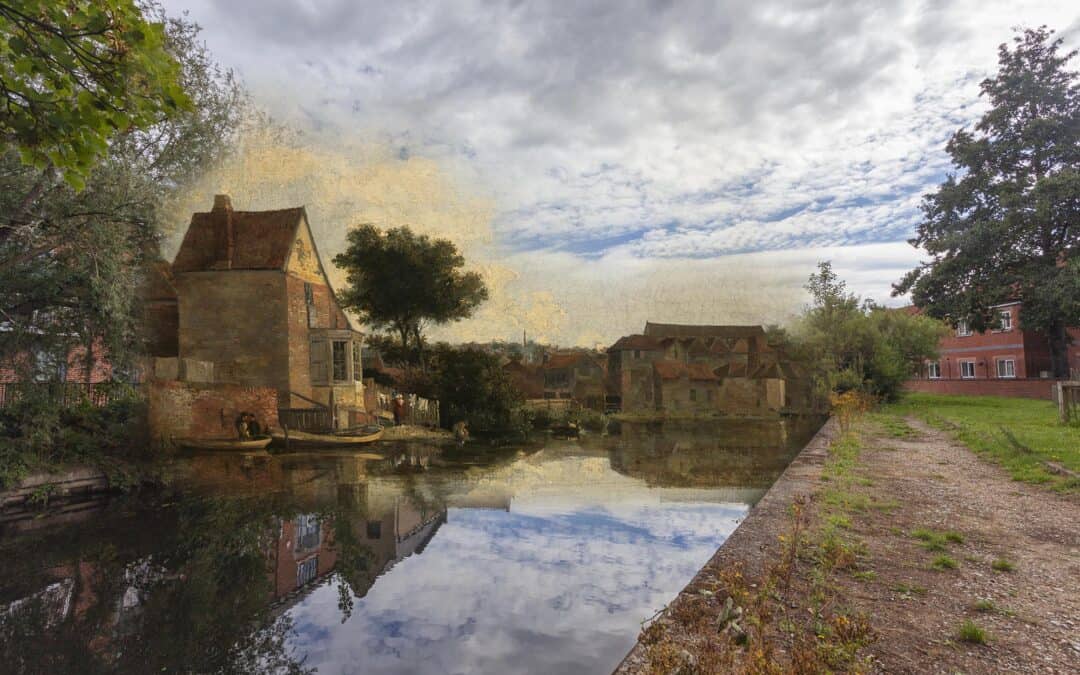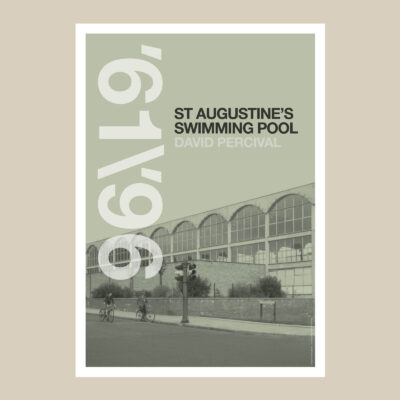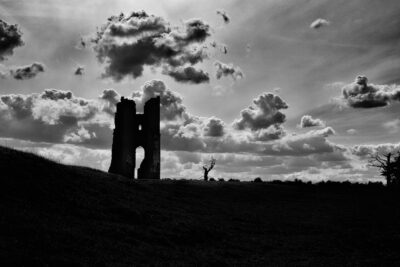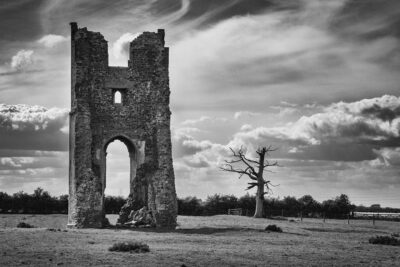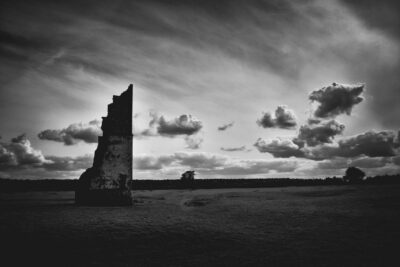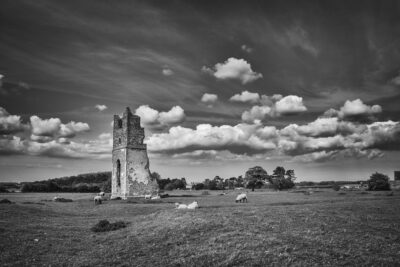Nick Stone is a contemporary photographer, writer and visual artist, he is the creative mind behind ‘Crome’s Norwich: 1821-2021‘, a photographic exhibition on display at the Museum of Norwich exploring the artist John Crome’s relationship with his native city.
It feels like I’ve followed Crome everywhere over the last year. The deliberation of stepping into his shoes may have ended, but it’s impossible to not find him still lurking in the city. Going from being conscious of his work and half knowing his whereabouts via a handful of blue plaques to understanding almost exactly where he stood to make a painting has been a strange and captivating thing.
In ‘Crome’s Norwich’, I create a ‘then and now’ view of Norwich: a style called ‘rephotography’. There is an uncanny nature to rephotography. It is more than replicating a scene – it’s part detective work, part pieces of research and additional advice from people who have already looked. Then there’s the burying yourself in the facts about where he lived, what his life was like. Time refracts these things; he is not the best catalogued of artists. Perhaps the provincial nature of our city and the nascent nature of a Norwich scene are reflected in how many pieces of the jigsaw are missing compared to some.
What has been unusual as I’ve worked on this is how reflective the process has become. I feel I know some of the photographer’s work I’ve sought to reshoot, you stand in their shoes and inhabit their heads to a certain extent. With Crome this took on a slightly obsessive quality, he lived in my part of the city, areas I’ve known for most of my life. And some of his story felt uncannily familiar.
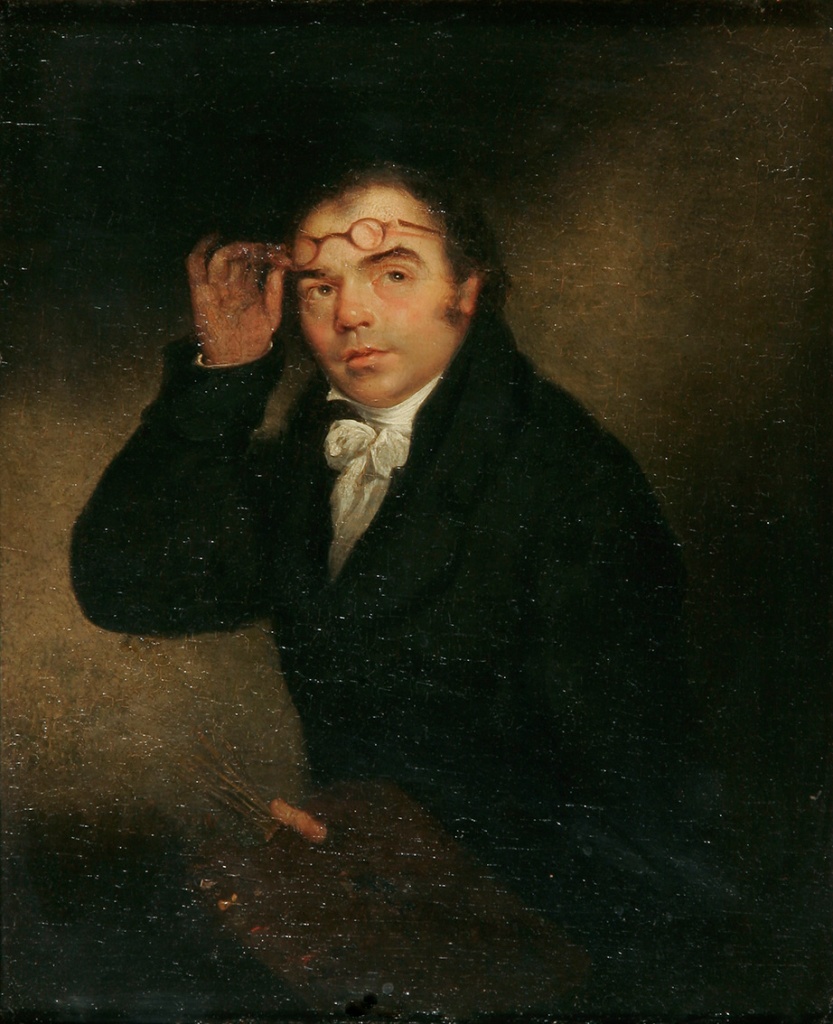
Crome was something of an autodidact, learning dictated by his station – his father a tradesman, a weaver. He learnt his craft partly through his labour as a sign writer for Francis Whisler in Bethel Street, how to grind and mix pigments and creating those formative marks on carriages for the rich. The infection to create is familiar whether it is paint or pixels. He fell in with people who had similar interests, took advice from people who had studied, practiced, groups coalesced. He liked a drink and smoke, the chatter of the workers in the pub in an area seeded with liberal radicalism. These relationships and discourses are still here. We still pal up, share, learn; it is familiar and still repeated in our corner of the world.
Part of what I think I find attractive about him, beyond the light and composition, the tiny details of life in his paintings, is the ‘art as recording’ – the nature of making something that, whilst beautiful, is also unwittingly perhaps as much a record of an environment. My own obsession with memory and landscape was happily diverted away from looking at other people’s photographs of lost buildings and differing fashions, to his and his contemporaries’ paintings – that time, buried around us in walls and roads as traces in our ever-shifting urban landscape.
‘[Crome’s work] is an archaeology in paint, to see beyond our usual lens’
I collect photographs. Probably the oldest I possess is from May 29th 1856 – a rather murky glass plate of Great Yarmouth port, a mess of dots and light leaks, taken barely 15 years after photography became truly viable as a pastime for even the vaguely well-off. Photography as a proposition wasn’t everyone having smartphones recording and mapping their lives and everything around them almost constantly. Crome and his ilk (Ninham, Cotman, Lound and company) give us a time machine to position ourselves back further still. It is an archaeology in paint, to see beyond our usual lens, to maybe understand a city and a county that is even more elusive than that photographed later – distant yet still tantalisingly the same.
His paintings of the back river above New Mills are my favourites. I think if you know the area and its history, which I do reasonably well, you really get a sense of the before. The languid stretches of the river Wensum unchanged in time and flow, the bank lines – although concreted and piled in the tidal stretches – start to become wild above the bridge and beside Train Wood and Wensum Park. This is his area, somewhere close to home where he stood or sat on the Bleaching Ground or near the Mill, places I also walk and record.
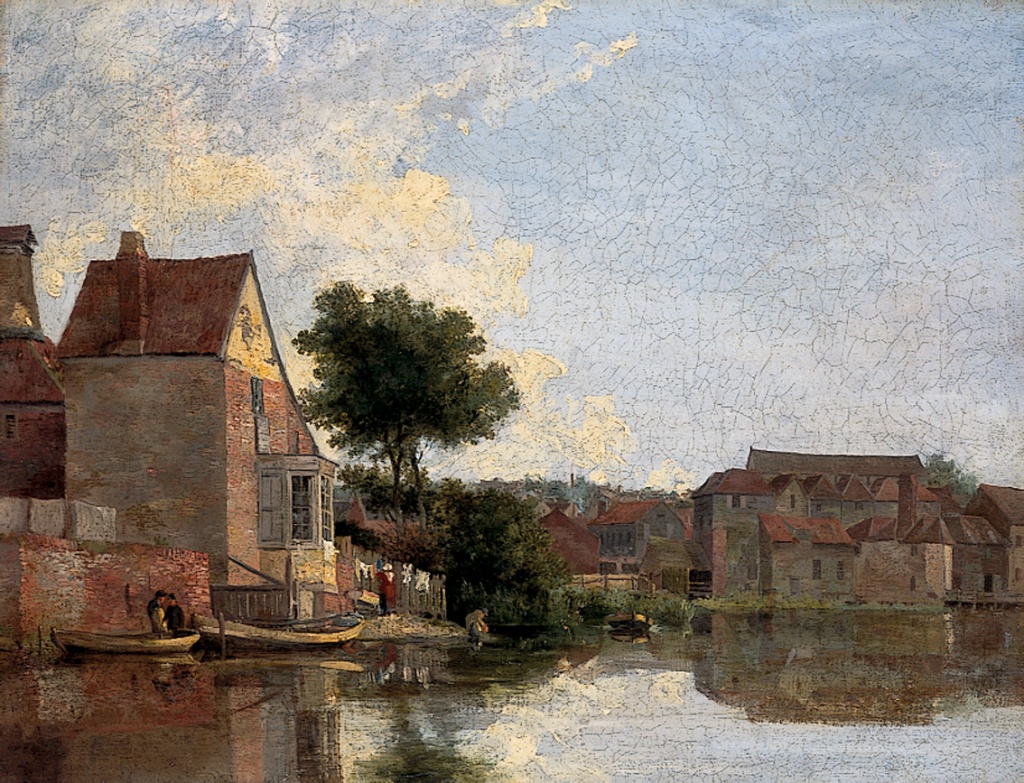


Select the images to see them in a larger format.
He knew his environment, saw and understood the life around him: the weavers, dyers, fullers, tanners and fishers, in the same way we know our local businesses. And when you gaze across the river and know there were tenements and factories on these still greening banks of the spring and early summer and think about his paintings, staring at a scrap dealer or a car yard where you once bought a rusty Fiat, you know that, while the industry may have changed, the socio-economic viewpoint is similar. It has really only shifted focus recently as more riverside dwellings spring up along the banks as industry has been pushed outward into the industrial estates and along the arteries of our communication and transport – the roads and rail – and still it changes, as we work at home below our looms.
It is difficult to always place his work 100 percent accurately. Some areas have gone. It may only be a bend in the river that gives you a solid clue, perhaps an old map with the rectangular footprints of buildings left only as lines of ink, or a few photographs of tenements from 1900 or 1930 which rather fancifully could perhaps be a survival of some forms of what he could see.
One of my favourite images of these is the darkened brooding mass of St Martin’s Gate. This is partly because I have had a fascination since childhood with the medieval city wall – memories of playing in the tower on Queens Road waiting for a bus, staring at chunks of it from the back seat of a car on the ring-road. This painting posed a question: why is it called St Martin’s Gate? There is an arch in the painting, but the angle and position makes it impossible.
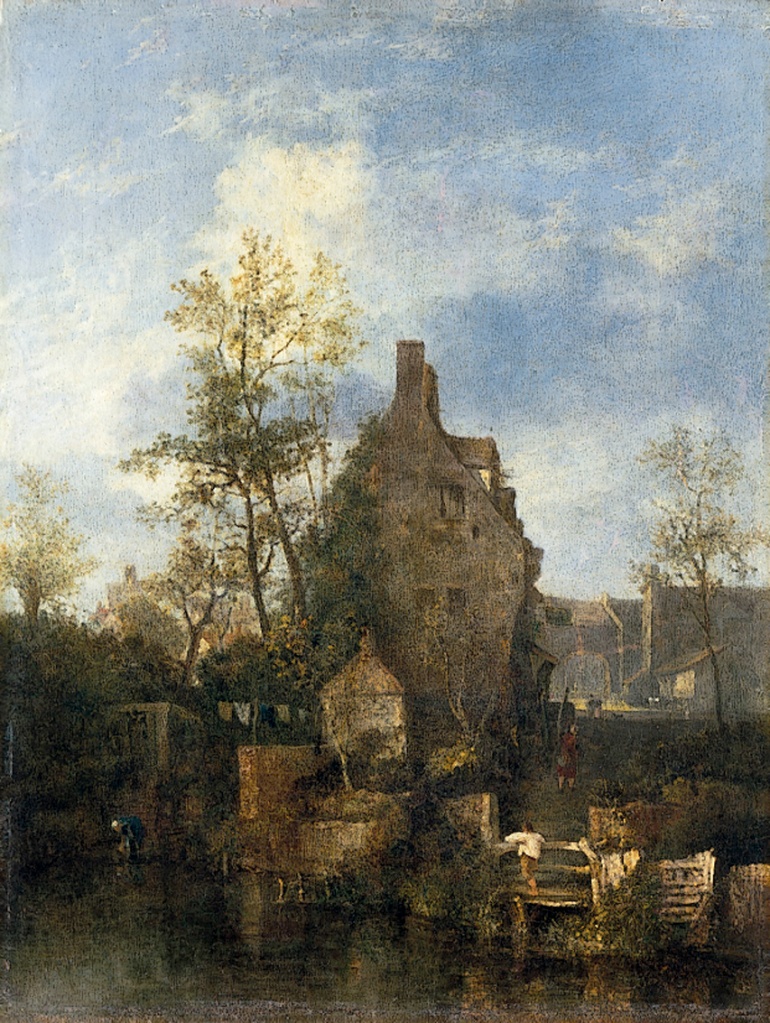
Given that we know that this building, Fuller’s Hall, existed until the 1930s, we know exactly what it looked like. My initial thought was this might be a capriccio – a construct made of pieces of scenes. It was painted around 1812, and as the city gatehouses were felled in the name of progress and access between 1791 and 1808, perhaps he had placed the gate in the background? Examination of both Ninham’s and Kirkpatrick’s images of St Martin’s Gate both show a different arch and a different building. So what is it? The answer is that it’s probably an archway which stood on St Martin’s Road through which you could access Fuller’s Hole – the name hole is apparently a local colloquial form of alley. The arch is probably echoed in the junction at the top of the slope of St Martin’s Close between to the large block of flats and and The Waterings.

As we worked on this project the major mystery turned out to be a different painting. It is one from a private collection and is titled Mousehold (visit the exhibition A Passion for Landscape: Rediscovering John Crome at Norwich Castle to view this artwork). I spent quite a while walking around the heath and across St James’ Hill and Kett’s Heights trying to locate it, clutching a fistful of paper maps and printouts, my phone battery gradually dying with Google maps perpetually open trying to get a fix on where it might be. It mostly lined up. The Castle, what appeared to be St Peter Mancroft and the Cathedral sat exactly where they should when I overlaid the image I’d taken from just below Mottram’s memorial on the spur in front of the old Barracks. It was a nice image, two people in it standing viewing the city as Crome’s figures sat behind them.
But something felt really wrong. The most obvious element being that the cathedral had no spire, so was this a fanciful piece, did it not exist in one place? Those sharp banks of a quarry made no sense either. Cow Tower was also wrongly placed, sitting in buildings nowhere near the bend in the river. It has previously been conjectured to not be what it says it is; Ralph Hale Mottram, who wrote a biography of Crome, believed it was from Hellesdon. He wrote “One has to stand a long while before the ‘Norwich from the Gravel Pits at Hellesdon’ to believe that Crome altered the silhouette of Norwich to make it pretty”. Charles Collins Baker who wrote Crome’s monograph in 1921, describes the view as “a sort of Norwich”. I read and reread the pieces – nothing seemed fixed, they knew no more than I did.
The key, it turns out, is the smock mill to the left of the middle ground, and once I’d turned back to 3D mapping and looked at locations of mills in Norwich in and around 1800 it started to make sense. The only smock mill at the time sat on top of Black Tower on the ridge over the Wilderness in Carrow, and even by warping perspective and changing foreshortening, there was no way it could be at that position in this painting from the spur at Mousehold.
I spent a few hours clambering about on the top of the Bracondale ridge. It’s quite difficult to actually see that view at all because of tree growth and buildings. I wandered down to Carrow Abbey and stared blankly at the city, there were quarries here and it’s a known spot he painted. I thought it was somewhere along here, but this also turned out to be wrong.
A further trip was required. I triangulated the various points on the map backwards to a point. It seemed to be in the vicinity of Whitlingham and Trowse. And so it goes.
The whole of the Trowse ridge behind Whitlingham is riddled with quarry cuts. There’s no real clues as to a location based on existing topography. There are a fair few still visible, but due to the position of the curve in the river and the location of Black Tower and the smock mill, my instinct – plus some landscape geography looking at terrain and elevation – indicated to me it was probably painted near the ski slope which was roughly the location of the line back I drew on the map I’d scribbled all over. To access the rough spot you actually walk past what looks to be a massive quarry cut; a huge bowl full of trees. I’m guessing slightly at the age of them, but I’d not think there’s much in there that’s over 70 years old. It’s mixed woodland and I suspect it might have been planted as cover over the quarries, to stabilise the area and then has naturally seeded.
So was he here? It seems he was.
There’s no detail left that is indicative of the foreground of Crome’s painting. It is highly likely that extraction continued after he painted it, so it’s possible what is now the floor of that bowl, which is probably 15 to 20 metres deep, was much higher at the turn of the 18th century which may have provided the view he saw. I walked further along the ridge, constantly triangulating the towers using online maps, no other position gives that bend in the river and the meadow from another viewpoint.
So what are we actually seeing in front of the couple drawing? The Castle is central, the towers of what appear to be the churches of St Peter Parmentergate and St Andrew, now largely invisible due to modern development. What was thought to be Cow Tower is the stout round tower of St Julian nestling in the Medieval buildings around King Street. The curve of water is the loop of Wensum which runs around Carrow, then a meadow. And there is the key, that mill, on top of the Tower.
“The relation between what we see and what we know is never settled. Each evening we see the sun set. We know that the earth is turning away from it. Yet the knowledge, the explanation, never quite fits the sight.”
John Berger
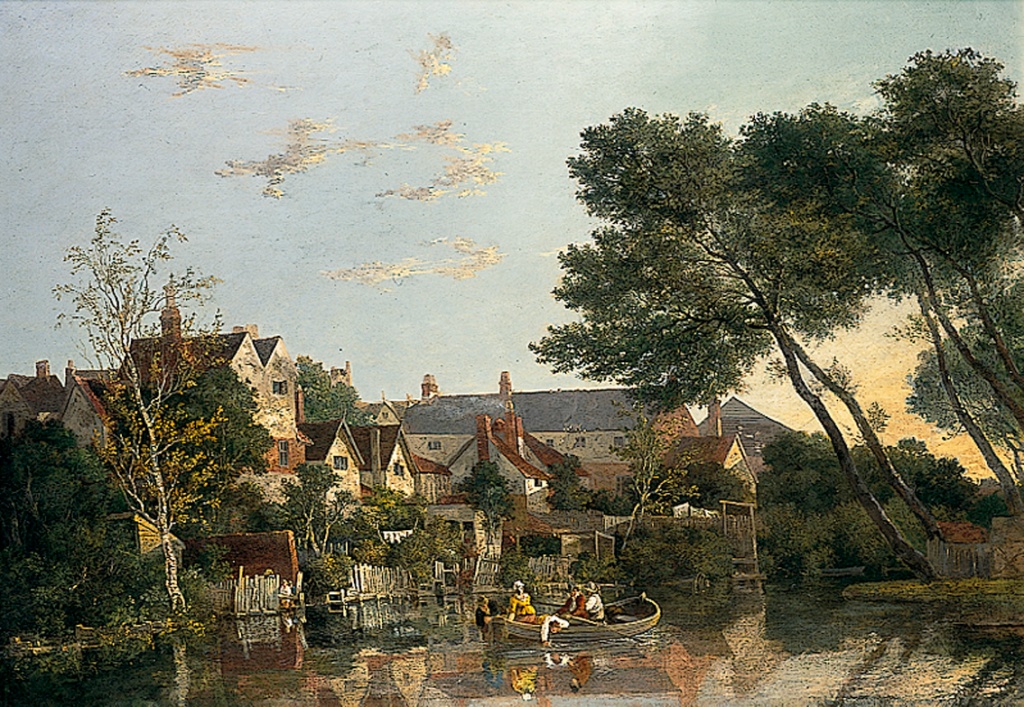
Select the images to see them in a larger format.
Crome’s Norwich: 1821-2021 can be seen at the Museum of Norwich from 22 May – 18 September 2021. This exhibition complements the major celebration of Crome’s art on display at Norwich Castle Museum & Art Gallery: A Passion for Landscape: Rediscovering John Crome, 17 May – 5 September 2021.
To accompany the Crome’s Norwich exhibition, Nick Stone has created a self-guided walking tour which takes in some of the locations featured in his work. Follow in Crome’s – and Nick’s – footsteps and see the places which inspired them both.
First Published 7th August 2021 on the Norwich Castle website. https://norwichcastle.wordpress.com/2021/07/08/finding-crome/

